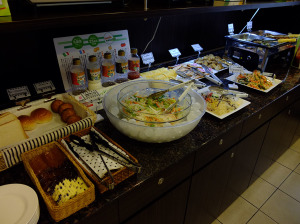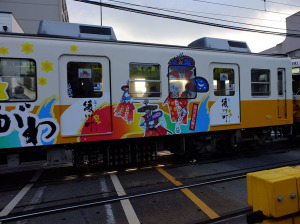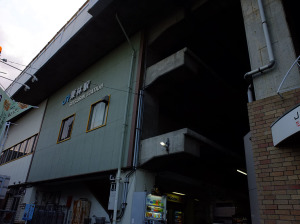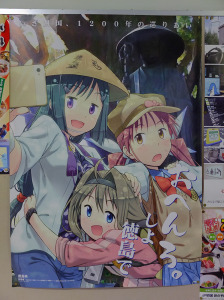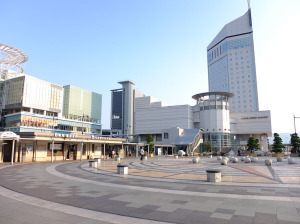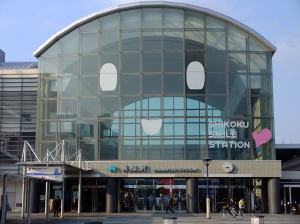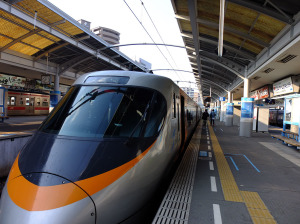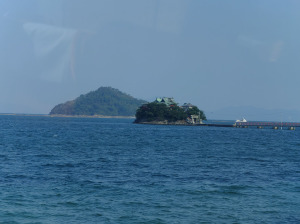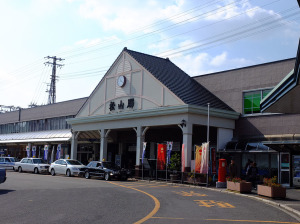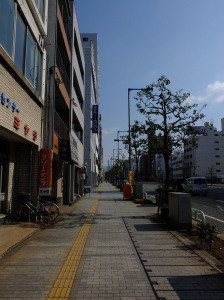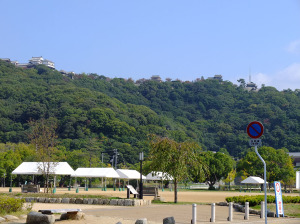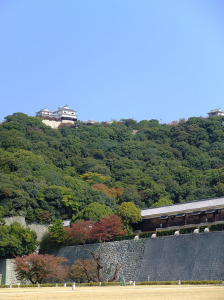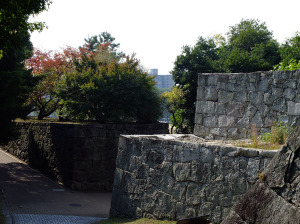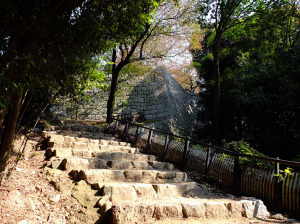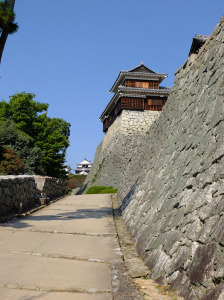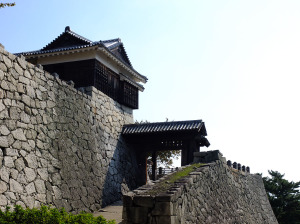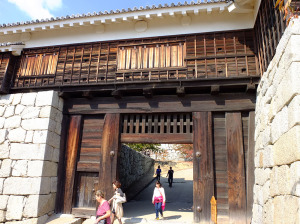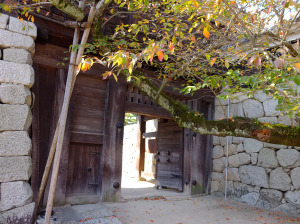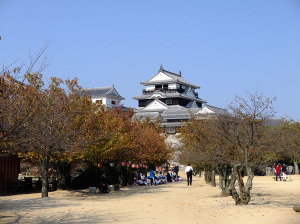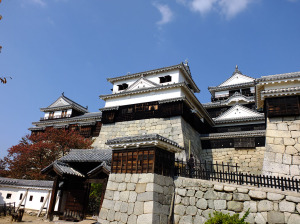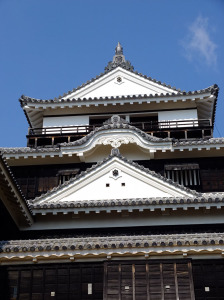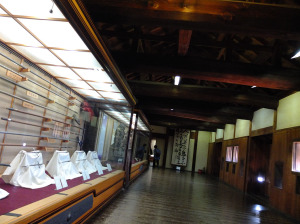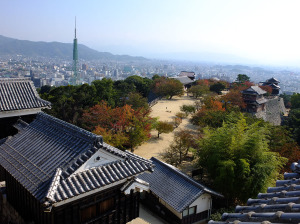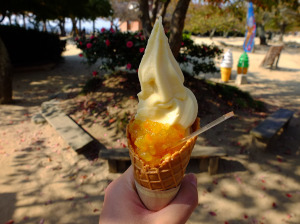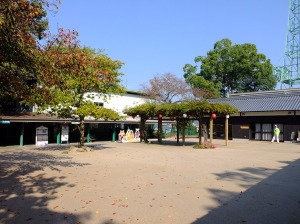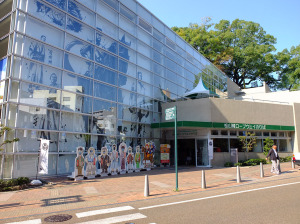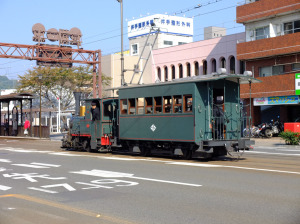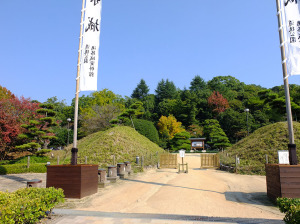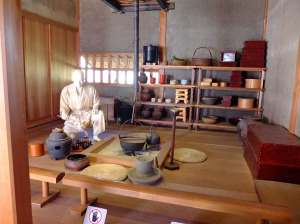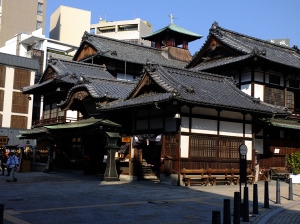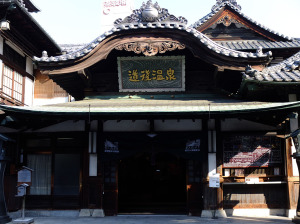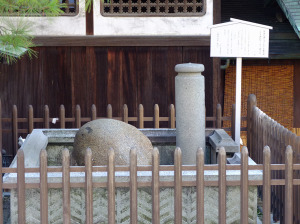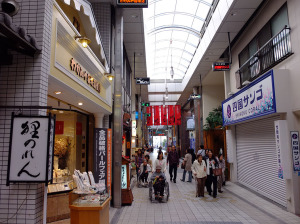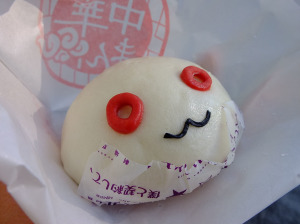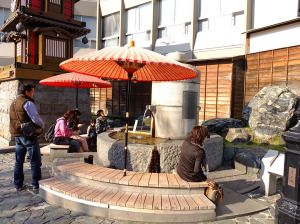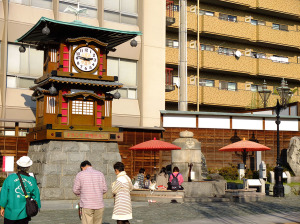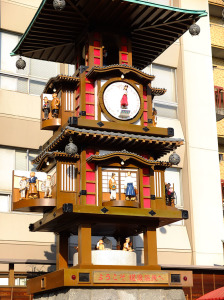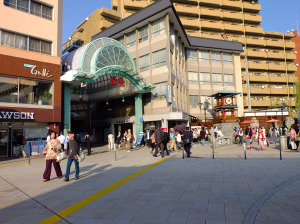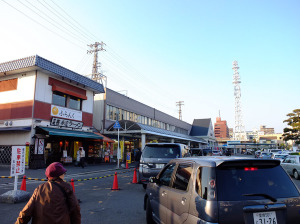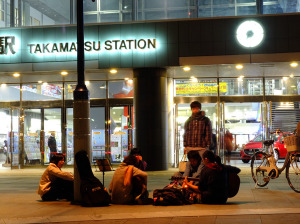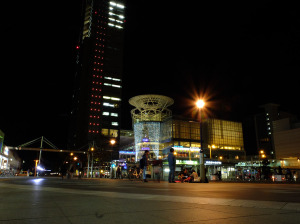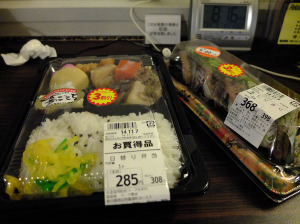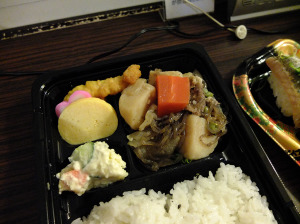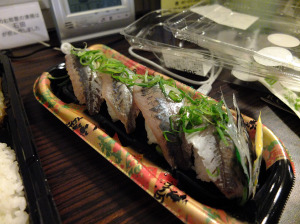There’s a few good things about Superhotel. First is that their breakfast starts early at 6:30, next is they’re predictable. Free drinks from the vending, rice, miso soup, plenty of salad, a few decent if not necessarily well made hot dishes, bread buns and some fruit.
The last 3 days of the trip are all in Shikoku, the island in southern Japan. Since my flight leaves at 5pm on the 3rd day, I get 2 full days and a few hours on the 3rd.
The first day is a day trip to Matsuyama, capital of Ehime prefecture in western Shikoku. Matsuyama is a little over 2.5 hours by express train. As a rough rule I do not consider journeys under 3 hours to be worth changing hotels.
I’m an early person and outside of castles and temples (and even that’s a maybe) there’s really no activities before 9-10am, using the early morning to cover distances means I loses very few time getting to my destination.
And, changing hotels takes at least 40 minutes. There’s the need to haul bags around, either finding a locker to store them or taking a detour to the hotel to drop them off, then time spent checking in hotel, familiarizing with surroundings.
Add it up a 2.5 hours travel time is pretty reasonable.
The express train between Matsuyama and Takamatsu is a very sleek tilt train.
I studies the view outside, of the seto inland sea and the fields of Shikoku. Perhaps of the route, traveling along the coast, Shikoku did not feel particularly rural to me. Certain no city, but at the same time it was not endless fields or orchards like touhoku.
Compared to the fairly modern Takamatsu station, the Matsuyama station is decidedly backwater. There aren’t even automated barrier gates, instead tickets are checked manually by staffs.
Matsuyama castle is also one of the remaining twelve original castles in Japan. The first thing I noticed soon as I step into the castle grounds is that it’s actually on top of a small mountain that rises above the city flatlands.
This is a real mountain fortress. And it means a long arduous climb that I was not expecting.
The climb is steep and took me about 10 minutes.
The fortress design of the castle is reflected in its many walls, snaking routes and layered defenses.
The southern approach to the plateau entrance is a good example. For an attacker battling up the mountainside, he’ll see a path that splits into two, one which does a U-turn up a slope into the southern end of the courtyard and heavily guarded by towers, another path goes straight along the base of the wall toward the keep in the back.
This is actually a trap intended to split the attackers. Anyone that is lured by seemingly easy and straight path to the keep will find themselves at a dead end, all while death rains down from the walls above.
Past the U-turn and doorless gate is another two layer of walls and gates.
Rows of cherry blossoms are planted over the plateau, making the castle one of the best cherry blossom flowers viewing spots.
Ehime produces a lot of mikan (mandarin?) fruits (about 70% of the mikan I bought on this trip were grown in Ehime) and a local specialty is the mikan fruit ice cream. Please don’t be an idiot like me and buy the ice cream from the only shop up in the plateau. Buy them down below for half the price.
I had come up the western side and I now head down the eastern route toward Dogo Onsen. It is only then I discover there’s a chairlift that brings people up from the bottom of the mountain….. doh. It’s 270Y one way and 510Y return. You probably only need it for the way up.
By accident (or perhaps unplanned is the better word) I walk into Dogo park and the Yuzuki castle ruin archive museum.
Yuzuki castle was built by the Kono clan that ruled the area from the Kamakura period until the end of the Sengoku period when they surrendered to Hideyoshi. There’s few signs of it left but some foundations in the park.
Not many people visits the archive museum, I can tell cause the museum staff was very excited to see me, and somewhat disappointed when he found out I wasn’t Japanese and he wouldn’t be able to share everything he knows about the castle.
The displays provided ample information however. I learned a detailed timeline of the Kono clans and history of the castle, what the excavations of the area discovered. Plenty of pottery and how the type of pottery correlated to each level of the social hierarchy.
Peasants and low ranking samurais had mostly locally produced plain potteries. Officials and others of higher status had more decorated plates, bowls and vases, some from Korea and south east asia.. The lords and their closest servants had elaborate fine potteries, a great portion imported from China.
I was surprised by evidence of this much trade between Japan and China a thousand years ago. Taking the general time period of 12th to 13th century puts it at the Yuan and Ming dynasties in China, neither I was aware of having close ties with Japan.
The staff also put on a short movie that acted out the rise of the Kono clan. I understood maybe 30% of it? Something about their rise due to achievements in the fight against the mongol invasion. Then expanded their influence by gathering an army of pirates that roamed the Seto inland seas.
The place is surprisingly informative for such a small museum. Entrance is free and definitely worth spending at least 30-40 minutes there. Looking back I probably should have asked the staff to play the other short films available too.
Because of my detour through the park, I sort of arrive at Dogo onsen through the back.
Dogo onsen claims to be the oldest onsen in Japan dating back to the 6th century, though the present day building only has about 100 years on it. The bathhouse has a section and bath reserved for the imperial family.
It’s quite different from what I expected. It’s smack in the middle of the city suburbia, lacking vistas or sceneries, not even a historic looking area. Due to the space constraints nearby hotels are also plain looking. It makes sense, people come here to go bath in the Dogo onsen, not bath in their hotels so there’s less need for keeping fancy outdoor baths themselves.
It is mid afternoon, activity around the area is subdued. It’ll get more busy toward the evening when people have checked into their hotels and want to take a bath before or after dinner.
The best way to enjoy Dogo onsen would be to go in and have a bath… but… I’m not really a take a bath during the day person.
There’s a small shopping arcade connecting the onsen and the tram station, mostly souvenir shops, teahouses and cafes.
I grab a light lunch at the convenience store where they have a Madoka tie-in with a meat bun shaped after Kyubey, the adorable fluffy pet from the anime.
By the tram station is a foot bath where many are relaxing by and a clock tower that plays a puppet show every hour.
On top of the clock is a white heron, a symbol of Dogo onsen based on an old legend of a injured heron that landed here and was healed.
A guide stands beneath the clock, introduces visitors to the places history in his friendly old man voice.
After the puppet show I take a round about tour through Matsuyama’s shopping arcade back to the station.
It is approaching 7 when I get back to Takamatsu. While waiting for the local train to Ritsurin I step out to stretch my legs. There’s a group of teenagers sitting by a lamp post, one of them playing a guitar. Next to her is a sign saying she hopes to go to Tokyo one day.
It is a powerful scene. I’ve never lived in a place that is not a major city, constantly surrounded by fame and glamor even if I paid no heed or interest. In a small city like Takamatsu, Tokyo is a big and distant place where dreams are made, where idols are crowned and stories are written.
I wonder, if I had grown up in a rural area would I have more focus of what it is I want in life.
Feeling pretty accomplished today, I spoil myself a little buying an extra nigiri sushi.
Even the supermarket sushi is better than any sushi trains you can find in Sydney.
